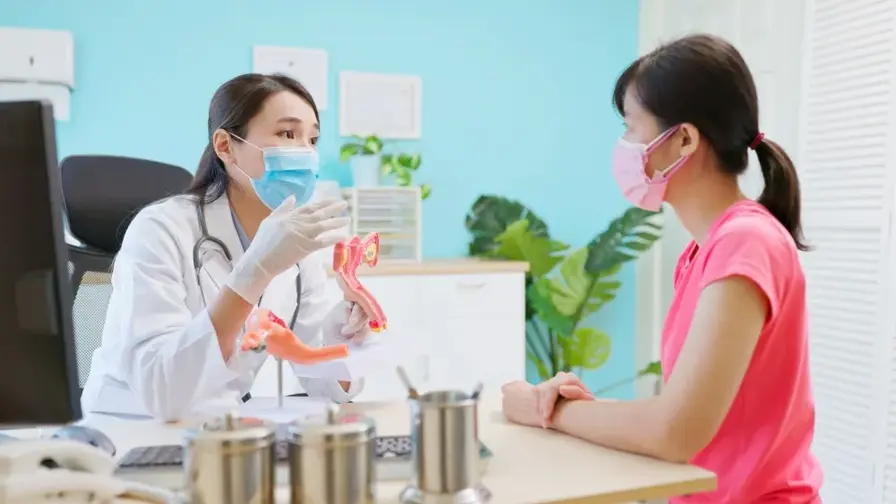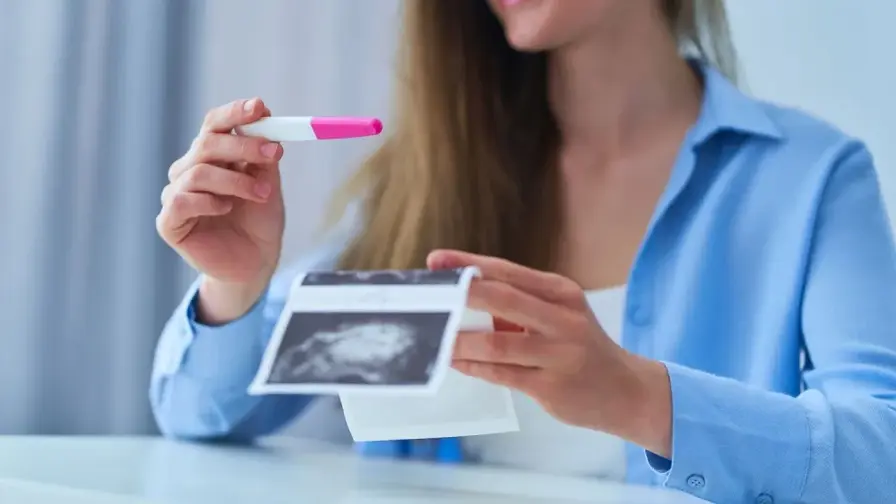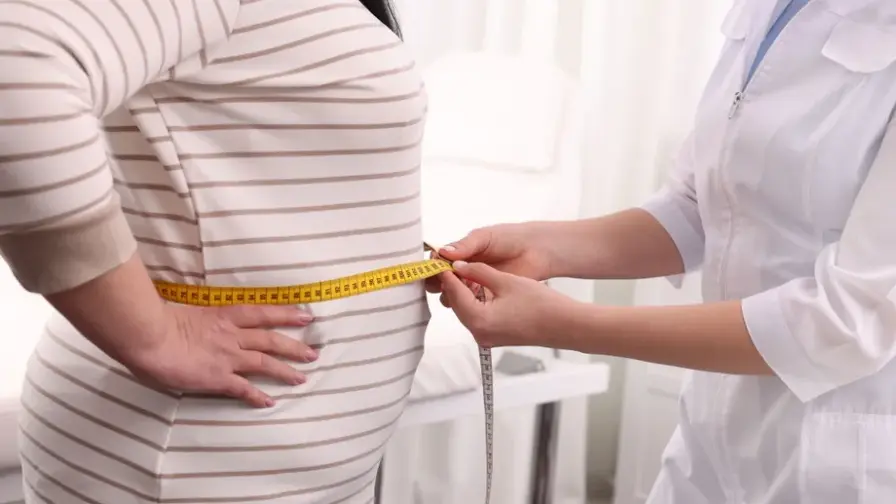Menstruation comes less than 8 times a year! Why do polycystic ovaries cause infertility? 4 keys to medical treatment

Polycystic ovary syndrome (PCOS) is one of the common causes of infertility in modern women. Huang Jieqi, deputy director of Huang Jianrong Department of Obstetrics and Gynecology and Taipei IVF Center, pointed out that common symptoms of polycystic ovary include menstrual irregularities (less menstrual flow in one year). 8 times), androgen excess (increased acne, excessive body hair, hair loss), ovarian structural abnormalities, infertility, metabolism and obesity, etc.
Menstruation only comes less than 8 times a year! 4 keys to infertility caused by polycystic ovaries
Why do polycystic patients have difficulty conceiving? Vice President Huang Jueqi said that there are roughly four reasons: the first is irregular menstruation, leading to abnormal ovulation; the second is hormonal imbalance, and excessive androgen interferes with the ovulation process; the third is changes in ovarian morphology, such as polycystic ovulation. Changes in the ovaries prevent follicles from developing properly.
Fourth, polycystic ovaries can lead to an imbalance in the ratio of luteinizing hormone (LH) and follicle-stimulating hormone (FSH), which in turn affects hormone secretion in the ovaries. In addition, if the patient has metabolic diseases such as obesity, metabolic syndrome, diabetes, cardiovascular disease, etc., or endocrine disorders, the risk of polycystic ovary may also increase.
Vice President Huang Jueqi emphasized that ultrasound is currently an important tool for diagnosing polycystic ovary morphology (PCOM), but diagnosis should not only rely on ultrasound examination results, but should also understand the patient’s condition from multiple aspects through the “Rotterdam Diagnostic Criteria” , for example, whether it is consistent with chronic anovulation, hyperandrogenism, and polycystic ovary morphology (PCOM). If 2 of the 3 items are consistent, it can be judged to be polycystic ovary.
Significantly increase the live birth rate, reduce the risk of miscarriage, and help polycystic patients achieve pregnancy “3 keys”
How can today’s reproductive medicine technology help polycystic patients increase their pregnancy rate? Vice President Huang Jueqi took “test tube baby” treatment as an example: Long-acting ovulation injections have a long half-life and can last for 5-7 days without the need for daily injections, which is expected to significantly relieve patients’ psychological stress; in addition, Vice President Huang Jueqi once said A paper published in the medical journal “Scientific Reports” points out that using oral progesterone instead of gonadotropin-releasing antagonist (GnRH Antagonist), combined with long-acting ovulation injection interventional treatment, can help reduce the risk of ovarian hyperstimulation (OHSS). The average number of eggs retrieved by the testers is 20.7, which is relatively suitable for women with polycystic problems who want to try to conceive.
For polycystic patients who are prone to become “ovarian hyperresponders” (number of eggs >15), Vice President Huang Jueqi pointed out that in order to avoid implanting embryos into the hormonal abnormal endometrial environment, the cycle after whole embryo freezing is The embryos will not be implanted for the time being, but will be thawed and implanted into the uterus after the next menstrual cycle. This treatment is called “two-stage in vitro fertilization” technology. Combined with the latest research on oral ovulation drugs, the natural cycle implantation method can significantly reduce the use of medications before implantation and reduce the complications of hypertension in the middle and late stages of pregnancy.
Vice President Huang Jueqi pointed out that previous studies have compared in vitro fertilization treatment for polycystic patients. The experimental results showed that the live birth rate of two-stage in vitro fertilization treatment reached 49.3%, which was significantly higher than the 42.0% of fresh embryo implantation. The miscarriage rate is significantly lower (22% vs 32.7%).
Are polycystic patients more likely to have “pregnancy complications”? Medical reminder: 6 things you must do to prevent
Vice President Huang Jueqi emphasized that in addition to receiving early treatment and discussing with a doctor whether to conceive through IVF, polycystic patients must also pay attention to daily life management, such as diet control, regular exercise, weight loss and adequate sleep. Life adjustments can significantly improve the problems of ovulation and insulin resistance, laying a good foundation for subsequent drug treatment.
Vice President Huang Jueqi reminded that polycystic patients should have regular prenatal check-ups during pregnancy and supplement with adequate nutrition, including progesterone and maternal multivitamins, to ensure a smooth pregnancy process. In addition, patients need to pay special attention to the control of blood sugar and blood pressure after pregnancy to reduce the risk of pregnancy complications. Women with polycystic ovaries are urged to seek help from reproductive medicine doctors as soon as possible if they have any thoughts about having children, and seize the golden period of pregnancy to complete their family planning.
Further reading:





